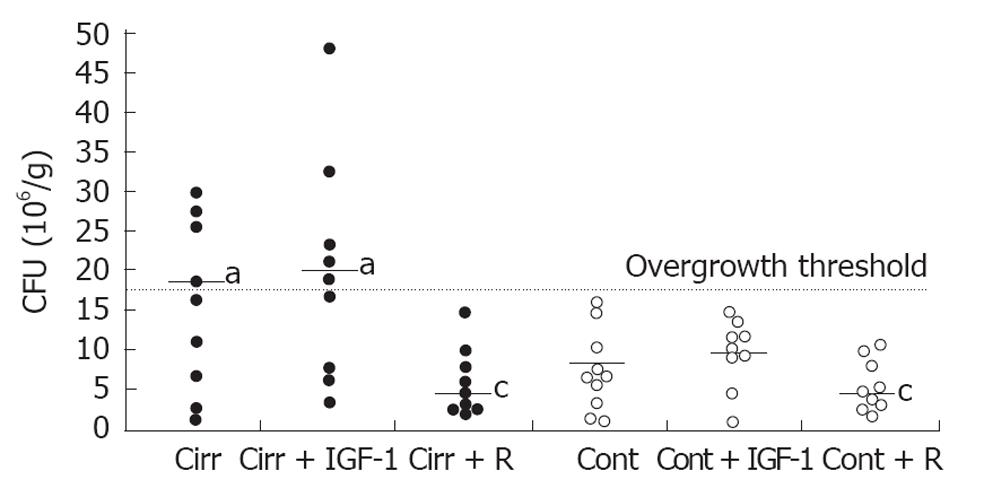Copyright
©2012 Baishideng Publishing Group Co.
World J Gastroenterol. May 7, 2012; 18(17): 2084-2091
Published online May 7, 2012. doi: 10.3748/wjg.v18.i17.2084
Published online May 7, 2012. doi: 10.3748/wjg.v18.i17.2084
Figure 4 Cecal bacterial populations.
Comparison of cecal bacterial content in cirrhotic groups (●) and control groups (○). Bacterial overgrowth was defined as a colony-forming units (CFU) count greater than the mean ± 2SD of the control group (dashed line). CCl4-induced cirrhosis plus portal vein occlusion resulted in cecal bacterial overgrowth in placebo and insulin-like growth factor (IGF)-1-treated cirrhotic rats (aP < 0.05 vs all others). Rifaximin treatment reduced bacterial content in cirrhotic rats to a level similar to that observed in the rifaximin-treated control group; bacterial counts in these latter groups were the lowest among all groups (cP < 0.05). Cirr: Cirrhosis; Cont: Control; R: Rifaximin.
- Citation: Òdena G, Miquel M, Serafín A, Galan A, Morillas R, Planas R, Bartolí R. Rifaximin, but not growth factor 1, reduces brain edema in cirrhotic rats. World J Gastroenterol 2012; 18(17): 2084-2091
- URL: https://www.wjgnet.com/1007-9327/full/v18/i17/2084.htm
- DOI: https://dx.doi.org/10.3748/wjg.v18.i17.2084









